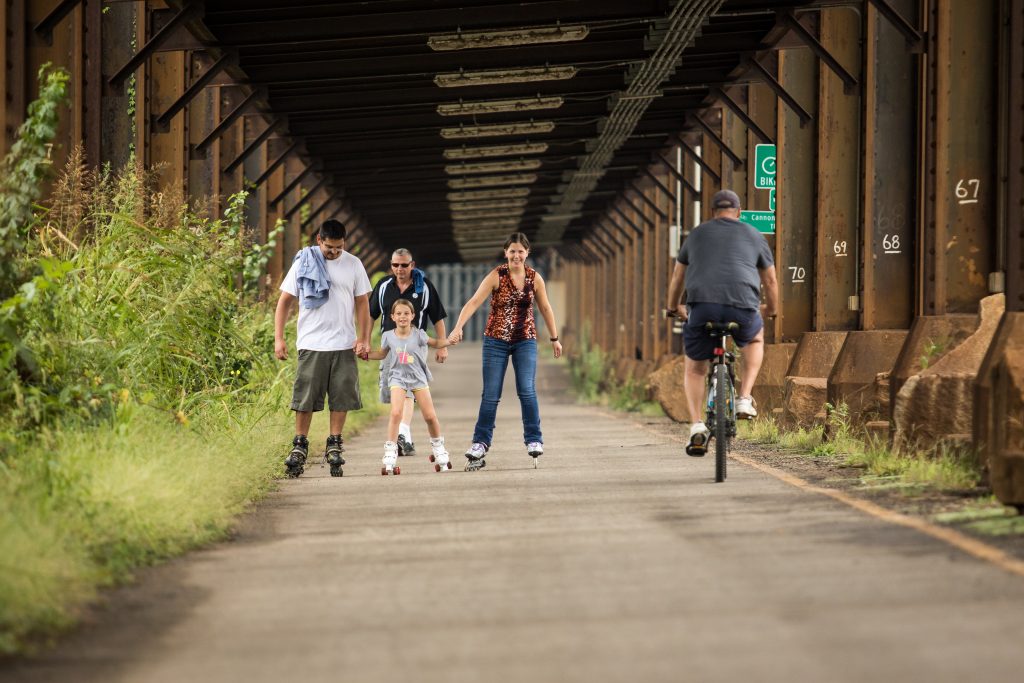Active City Movement Runs into Challenges Despite Validation
 Active cities feel vibrant and alive with people walking, biking, and running through the streets and playing at the schools and parks. People in these communities are healthier and more social when they are outside and full of energy. Active cities attract young people and spur business growth because they have a more productive workforce and lower healthcare costs. Active cities have fun, well-supported sporting events. In active cities, residents of all ages, income levels, and ethnicities are invited to participate in the physical activity movement.
Active cities feel vibrant and alive with people walking, biking, and running through the streets and playing at the schools and parks. People in these communities are healthier and more social when they are outside and full of energy. Active cities attract young people and spur business growth because they have a more productive workforce and lower healthcare costs. Active cities have fun, well-supported sporting events. In active cities, residents of all ages, income levels, and ethnicities are invited to participate in the physical activity movement.
While this may sound idealistic, a mountain of research by Active Living Research proves that the benefits of active living described above can and do happen in real life and in real cities. The active cities movement in Europe has gathered critical mass through the support of the World Health Organization. Cities like Copenhagen, Paris, and Amsterdam embraced the active culture and have revived their cities economically and improved the health of their residents.
One of the challenges that many cities face in these efforts is a lack of funding for active living initiatives and for the organizations that spearhead these programs. Across the country, and here in Richmond as well, active transportation and parks funding continues to be difficult, and oftentimes impossible, to allocate, despite the overwhelming evidence illustrating the value of concerted efforts to improve the built environment and support active living.
Active living programs at schools, too, also fall victim to inadequate or non-existent funding. Schools cut recess, reduce after school sports opportunities, and don’t maintain facilities. In many cases this is done to shift resources towards improving standardized test scores, without realizing the positive effects that physical activity can have on academic performance and overall behavior. Research by the U.S. Center for Disease Control clearly shows that children who have at least 60 minutes of physical activity a day perform better academically in school. Rather than having low-performing schools decrease the time devoted to physical activity and recess to focus on academics, more resources should be devoted to these areas as they can help boost classroom performance.
In the United States, a negative stigma has been placed on intentionally carving out time for kids to play outside, and, according to the Aspen Institute, youth participation in sports is now dropping across the country and plummeting in our lowest income neighborhoods. Combine this with the increase in ‘screen time’ for many Americans, and the idea that plugging kids into a tv, tablet, or phone can provide a low-cost child care option, and the result is a continued rise in youth obesity and health care costs.
Those of us in the trenches fighting to organize our communities to advocate for active living infrastructure and programs know how hard and important this work is to our communities. We share the scars from cuts in funding, backlash against using streets for active transportation, cuts in school sports programs, and even the elimination of physical education classes.
The active city movement requires hard and sometimes messy work, but the amazingly positive impact on the real lives of people in our communities keeps the necessity of a path forward obvious. The active living movement needs champions—people like you who will stand up and fight for a better way of life for all of our citizens. Together, we can build a movement of active living.
Learn how parks, infrastructure, bike and pedestrian pathways, and physical activity in schools can contribute to creating vibrant, active cities for everyone at the upcoming inaugural Movement Makers: National Active Living Summit in Richmond, VA (May 17 to 19).
Among the featured speakers will be acclaimed author and co-founder of the Children and Nature Network Richard Louv (Last Child in the Woods, The Nature Principal) who prioritizes the importance of children and adults being active in outside. His presentation will serve as a guide for any individual or organization looking to reconnect to the benefits of being active and the outdoors.